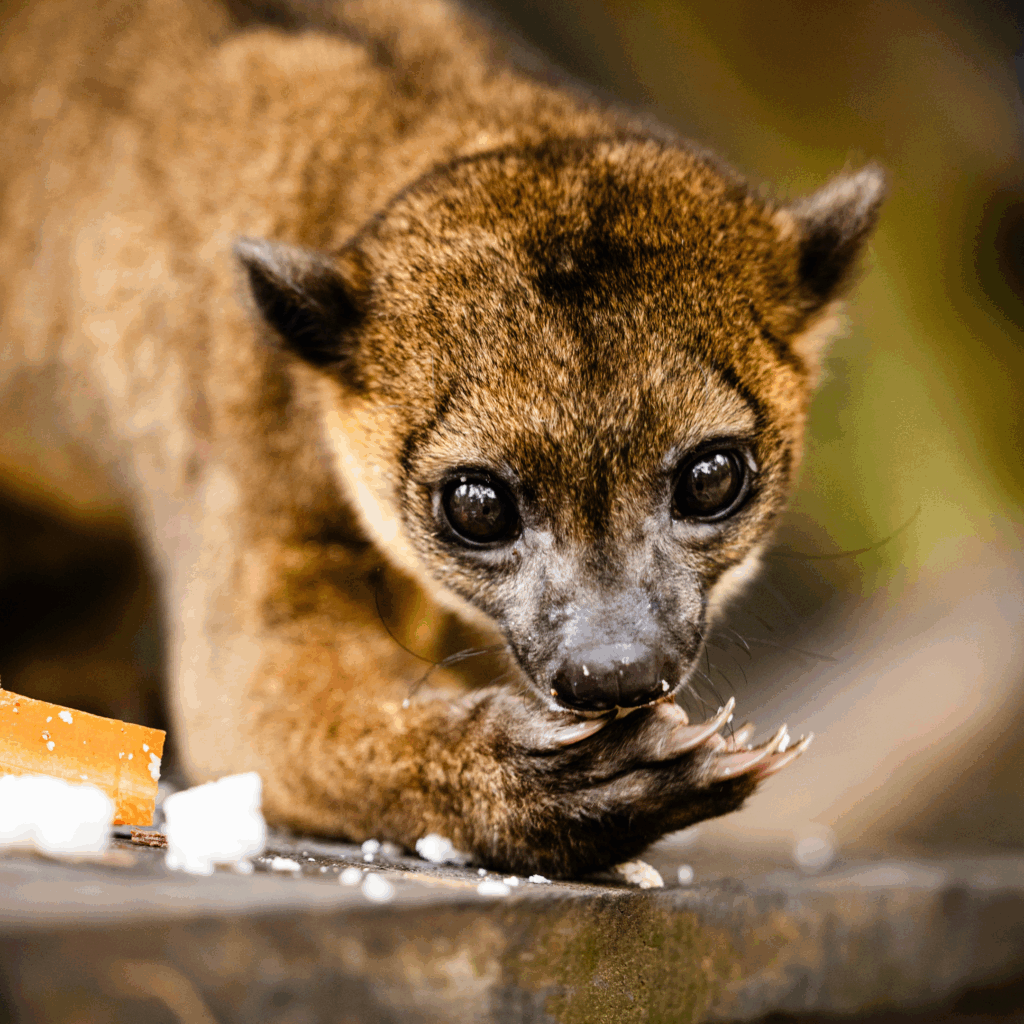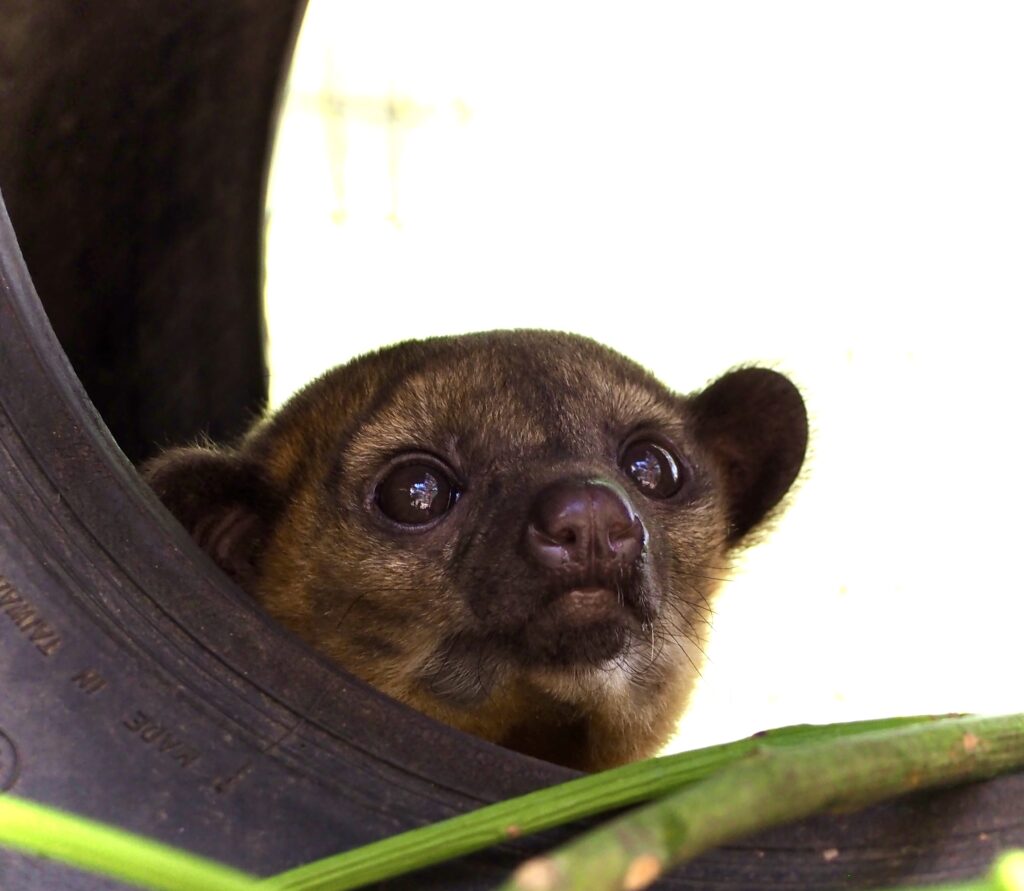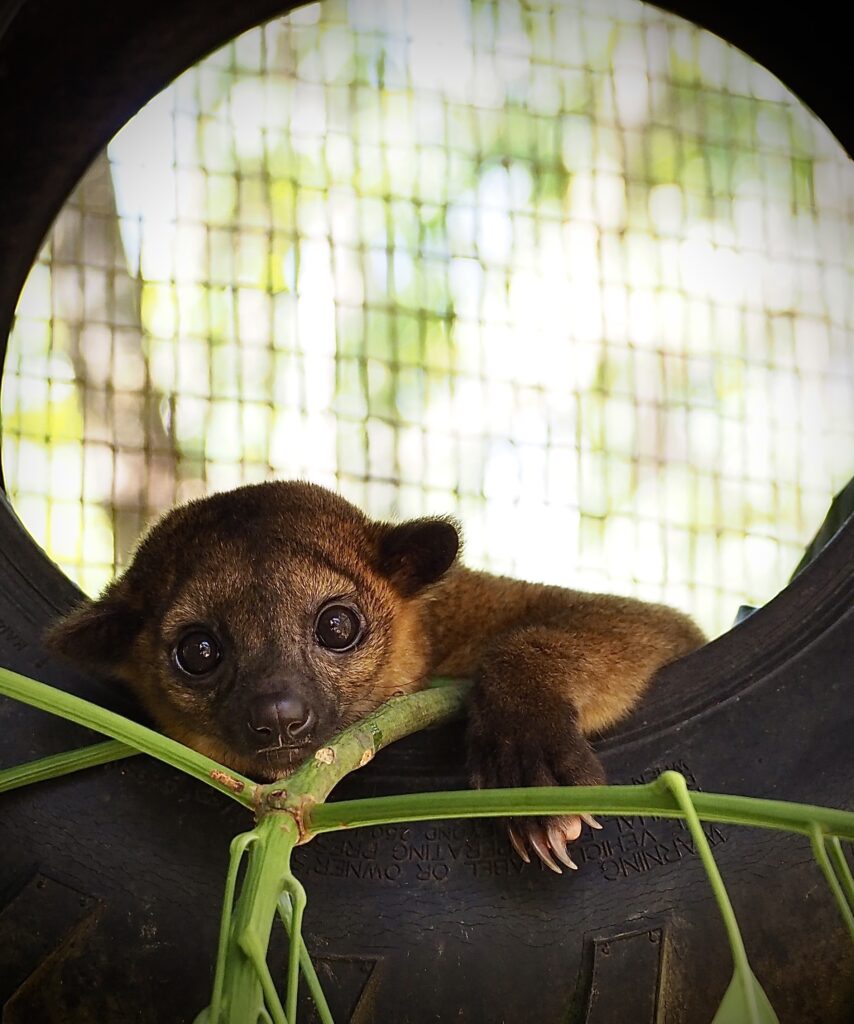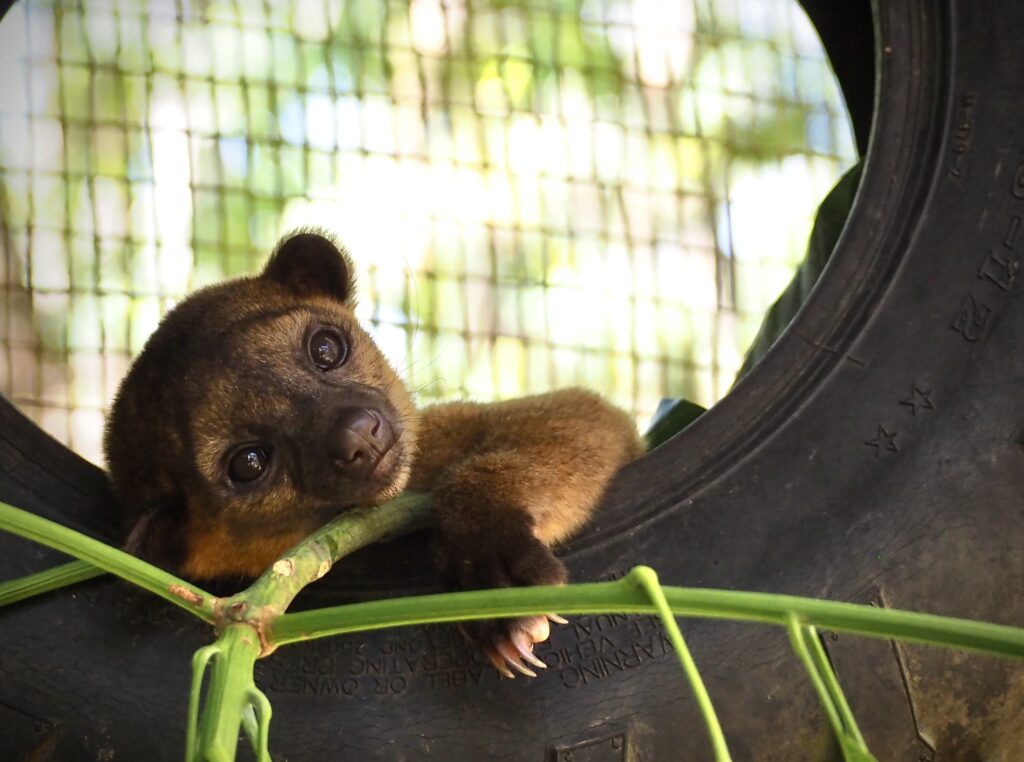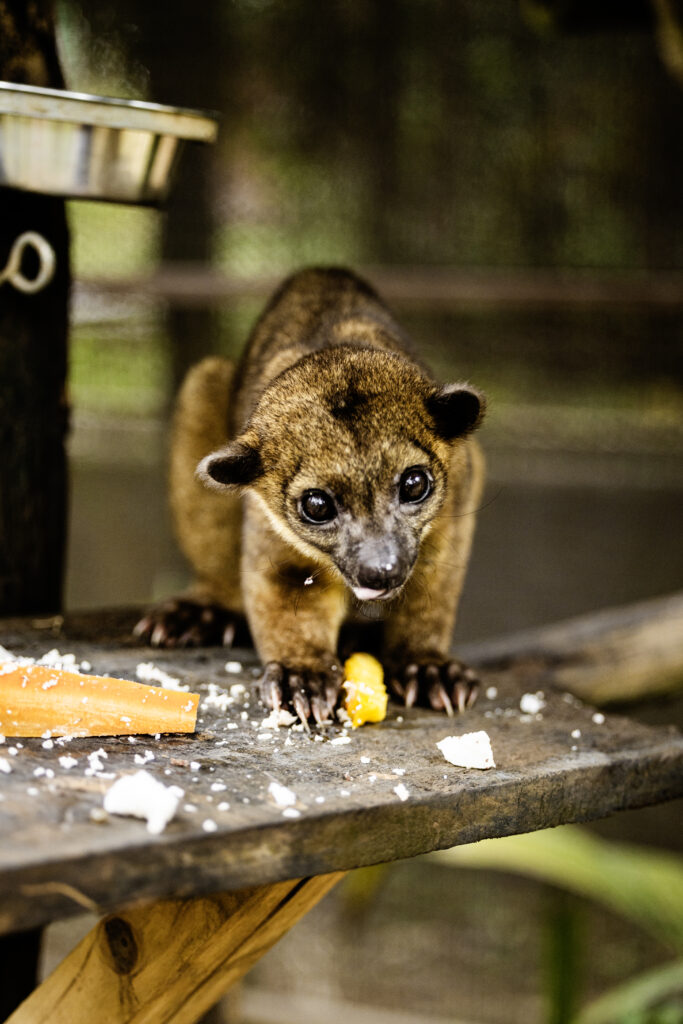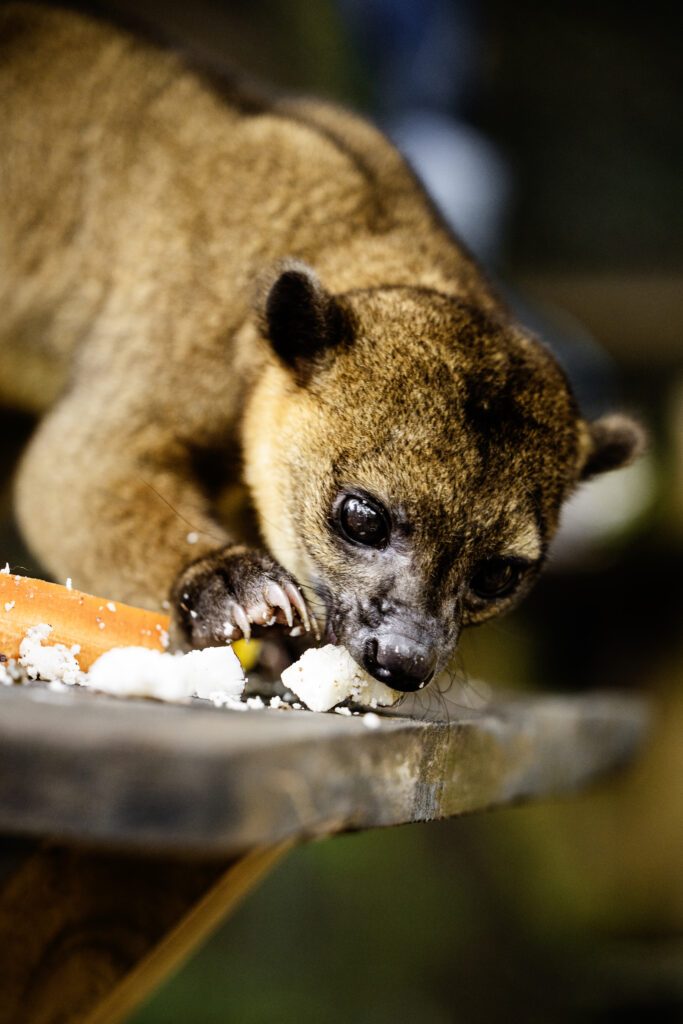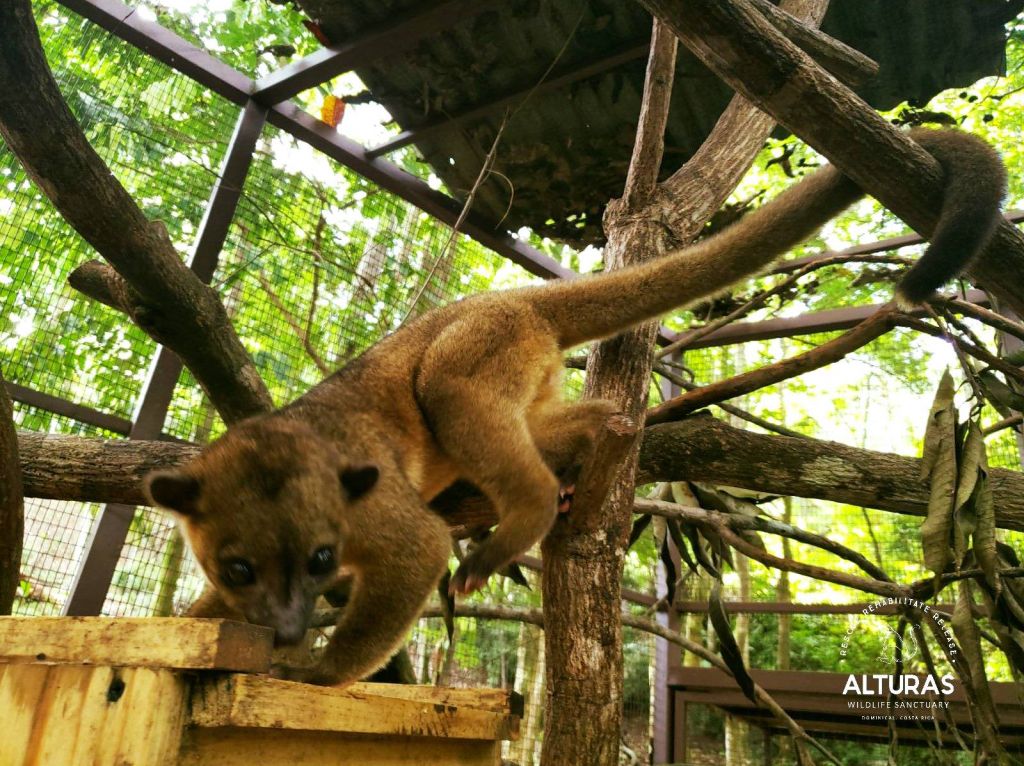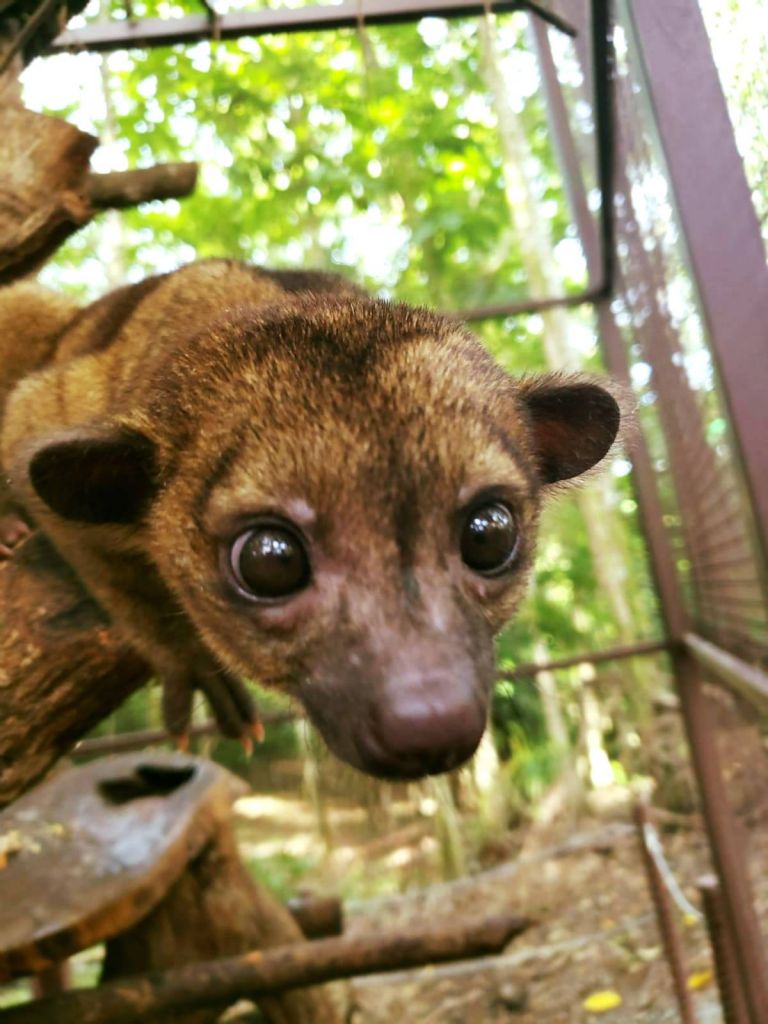Jimmy
No one knows exactly what happened to me. I was either born with neurological issues and rejected by my mother, or I may have fallen from a tree and been injured. Because of it, I only see about half as well as a normal kinkajou, my hearing is limited, I’m always a bit itchy, and climbing isn’t easy for me.
When I arrived at the sanctuary, I needed six months of intensive physiotherapy just to learn how to walk, climb, and even use my tail properly. I started out in a small enclosure, but once I could move more confidently, they moved me to the one I live in now.
My space is designed so I can find my way around safely, and the staff are careful not to make loud noises that might startle me. Even with all my challenges, I’m doing very well.
Because of my eyesight and neurological issues, I can’t be released. I also can’t join the other kinkajous, since they would likely see me as weak and wouldn’t accept me. So I stay here, where everything is set up to help me live comfortably. My name is Jimmy.

